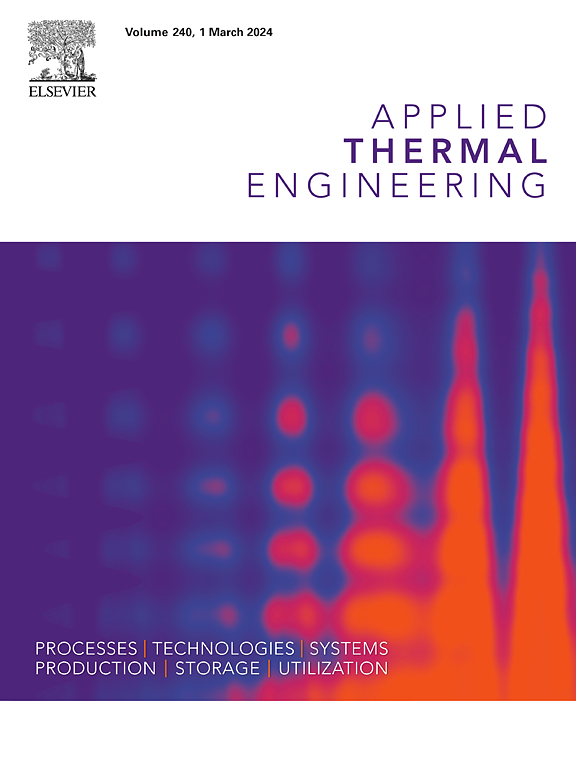Kern法与Bell-Delaware法在管壳式换热器设计中的系统比较分析
IF 6.9
2区 工程技术
Q2 ENERGY & FUELS
引用次数: 0
摘要
本研究系统地比较了两种最广泛采用的用于预测管壳式换热器性能的人工计算方法:Kern方法和更精确但更复杂的Bell-Delaware方法。比较是在广泛的情况下进行的,考虑了相同的壳侧几何形状和优化的配置,对于给定的管束几何形状,最小化压降,同时实现相同的目标壳侧传热系数。分析了两种方法之间的差异与它们采用的不同经验相关性的关系。这种方法可以识别总体趋势,评估设计参数如何影响结果,并为研究人员和设计师提取实际见解。一个关键的发现是,在可能的情况下,增加密封条的数量,而不是挡板的数量,以达到理想的传热系数,在最小化压降方面更有效。此外,Bell-Delaware法和Kern法预测的换热系数比和压降比均随归一化折流板间距的增大而呈现单调增加的趋势。本文章由计算机程序翻译,如有差异,请以英文原文为准。
Systematic comparative analysis of Kern and Bell-Delaware methods for the design of shell-and-tube heat exchangers
This study systematically compares the two most widely adopted manual calculation methods for predicting the performance of shell-and-tube heat exchangers: the Kern method and the more accurate, though more complex, Bell–Delaware method. The comparison is carried out across a broad set of cases, considering both identical shell-side geometries and optimized configurations that, for a given tube bundle geometry, minimize the pressure drop while achieving the same target shell-side heat transfer coefficient. The discrepancies between the two methods are analysed in relation to the different empirical correlations they employ. This approach allows for the identification of general trends, the evaluation of how design parameters influence the results, and the extraction of practical insights for researchers and designers. One key finding is that, when possible, increasing the number of sealing strips, rather than the number of baffles, to reach a desired heat transfer coefficient is more effective in minimizing pressure drop. Furthermore, both the ratio of heat transfer coefficients and the ratio of pressure drops predicted by the Bell–Delaware and Kern methods can vary significantly from unity, and both tend to increase monotonically with the normalized baffle spacing.
求助全文
通过发布文献求助,成功后即可免费获取论文全文。
去求助
来源期刊

Applied Thermal Engineering
工程技术-工程:机械
CiteScore
11.30
自引率
15.60%
发文量
1474
审稿时长
57 days
期刊介绍:
Applied Thermal Engineering disseminates novel research related to the design, development and demonstration of components, devices, equipment, technologies and systems involving thermal processes for the production, storage, utilization and conservation of energy, with a focus on engineering application.
The journal publishes high-quality and high-impact Original Research Articles, Review Articles, Short Communications and Letters to the Editor on cutting-edge innovations in research, and recent advances or issues of interest to the thermal engineering community.
 求助内容:
求助内容: 应助结果提醒方式:
应助结果提醒方式:


